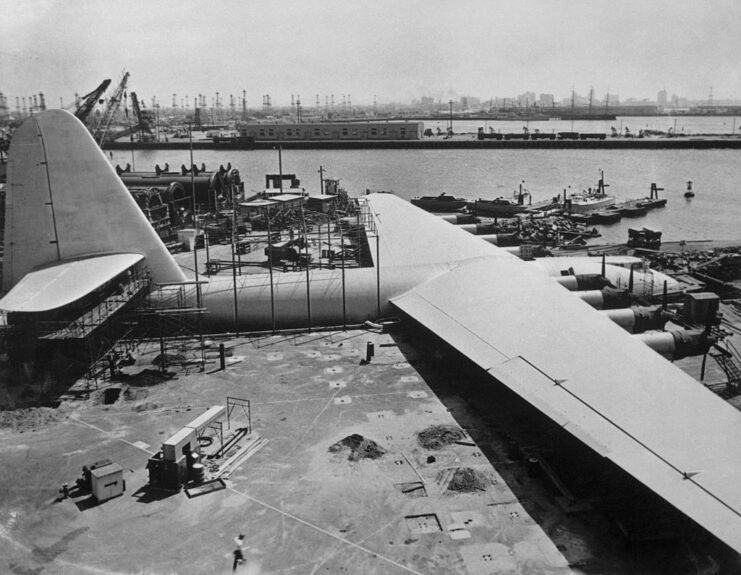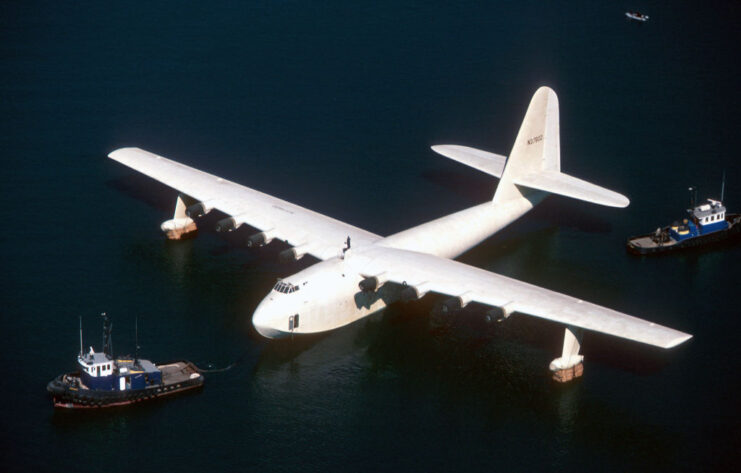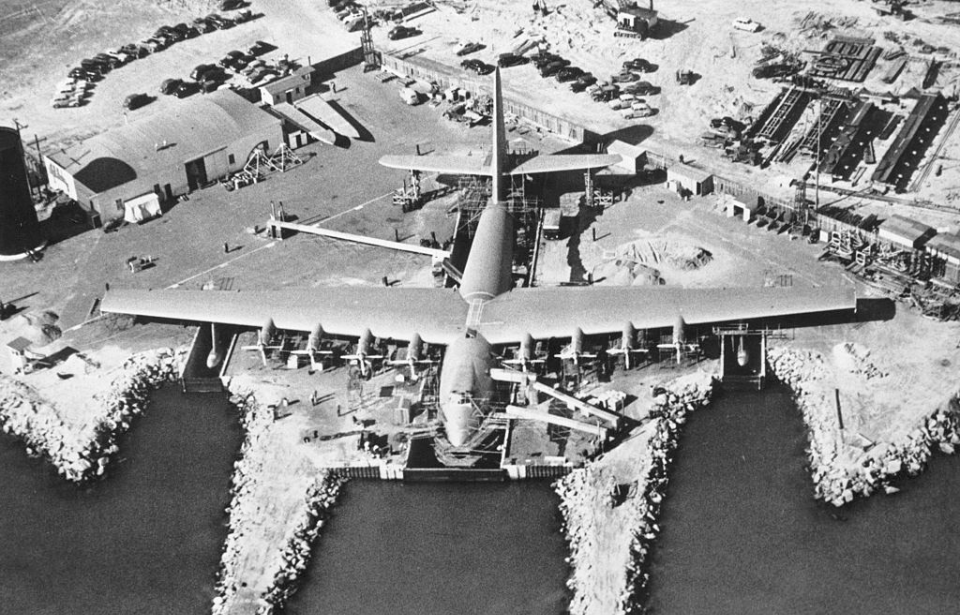Several experimental aircraft have been designed over the years, but few (if any) were as large and eye-catching as the Hughes H-4 Hercules. A flying boat prototype, this peculiar-looking aircraft was nearly 219 feet long and had a height of… Wait for it: almost 321 feet! To put that into perspective, the average football field, from goal line to goal line, is just 300 feet long!

The H-4 came from the mind of Henry J. Kaiser, who was known for building Liberty ships. It was the middle of the Second World War, and the United States needed to figure out a way to ship supplies to the United Kingdom without transiting the Atlantic, as it was teeming with German U-boats.
To produce the mammoth aircraft, Kaiser teamed up with Howard Hughes of Hughes Aircraft Company. The pair were given a contract to build the H-4, which they designed to carry either 150,000 pounds of cargo, two M4 Sherman tanks or 750 soldiers – basically, it needed to be big (and strong) enough to carry enormous loads.
As metal was needed for the war effort, the H-4 was constructed from laminated birch, earning it the nicknames “Spruce Goose” and the “Flying Lumberyard.” After a lengthy development process, which eventually saw Kaiser withdraw from the project, the aircraft was built, albeit after the war had come to a close.
Operated by just three crewmen, the H-4 was powered by eight Pratt & Whitney R-4360 Wasp Major piston engines and four-bladed Hamilton Standard propellors. In all honesty, it probably could have used several more power plants, as it weighed an incredible 400,000 pounds. It had a cruising speed of 250 MPH and a range of 3,000 miles.
Following its completion, the H-4 was transported to Pier E in Long Beach, California. Given its size, it had to be moved in three sections – the fuselage and each wing – with a smaller shipment for assembly parts. Once reassembled, a hangar was built around the aircraft, with a ramp leading into the harbor.
It would be comical to suggest the H-4 had a notable operational history, as it only underwent taxi tests. It did conduct a single flight, but it only traveled a mile and remained airborne for just 26 seconds. Despite the aircraft never flying again, a dedicated crew of 300 maintained it in its climate-controlled hangar, only for them to disband following Hughes’ death in 1976.

More from us: Naval Aviators Graffiti Jet Fighter After Pilot Lands On the Wrong Aircraft Carrier
The H-4 Hercules is currently on display at the Evergreen Aviation & Space Museum in McMinnville, Oregon. Given Hughes’ dedication to maintenance, it remains in relatively good condition. The flying boat’s former hangar, along with those that once made up Hughes Airport, have since been repurposed.
